March 13, 2021 Auroras
Wabana Lake
Well, it was the beginning of yet another high speed stream of solar wind. We had a corotating interaction region (CIR) ahead of the high speed stream interacting with Earth's magnetic field. We would have auroras. It was close to the equinox, when auroras are more common, and the skies were clear.
I headed out to Wabana Lake to do some shooting. I brought two cameras with me, thinking this would be a pretty good show. Since the CIR was well-timed for our diurnal auroral maximum (midnight), the auroras would be pretty high in the sky, and it would be worthwhile to have a second camera along. Unfortunately, my second tripod did not make it in the car, and I had to simply set the second camera down on the ice. I thought it might provide a different perspective on the shots, anyway, so it was not all that bad to forget a tripod.
Perhaps the bigger show this evening was the meteor that fell. I get meteors once in a while in my images, but they are usually pretty small. This one was much larger, though, and it stayed illuminated for about four or five seconds. Normally, the probability of this being in the frame is less than 50 percent, even with a wide angle lens. It is more likely to fall somewhere else in the sky. This one happened to be within the shot of both cameras, although it somewhat fell behing the trees on one of my shots. I'm somewhat lucky, also, that the shutter was open during the entire illumination event.
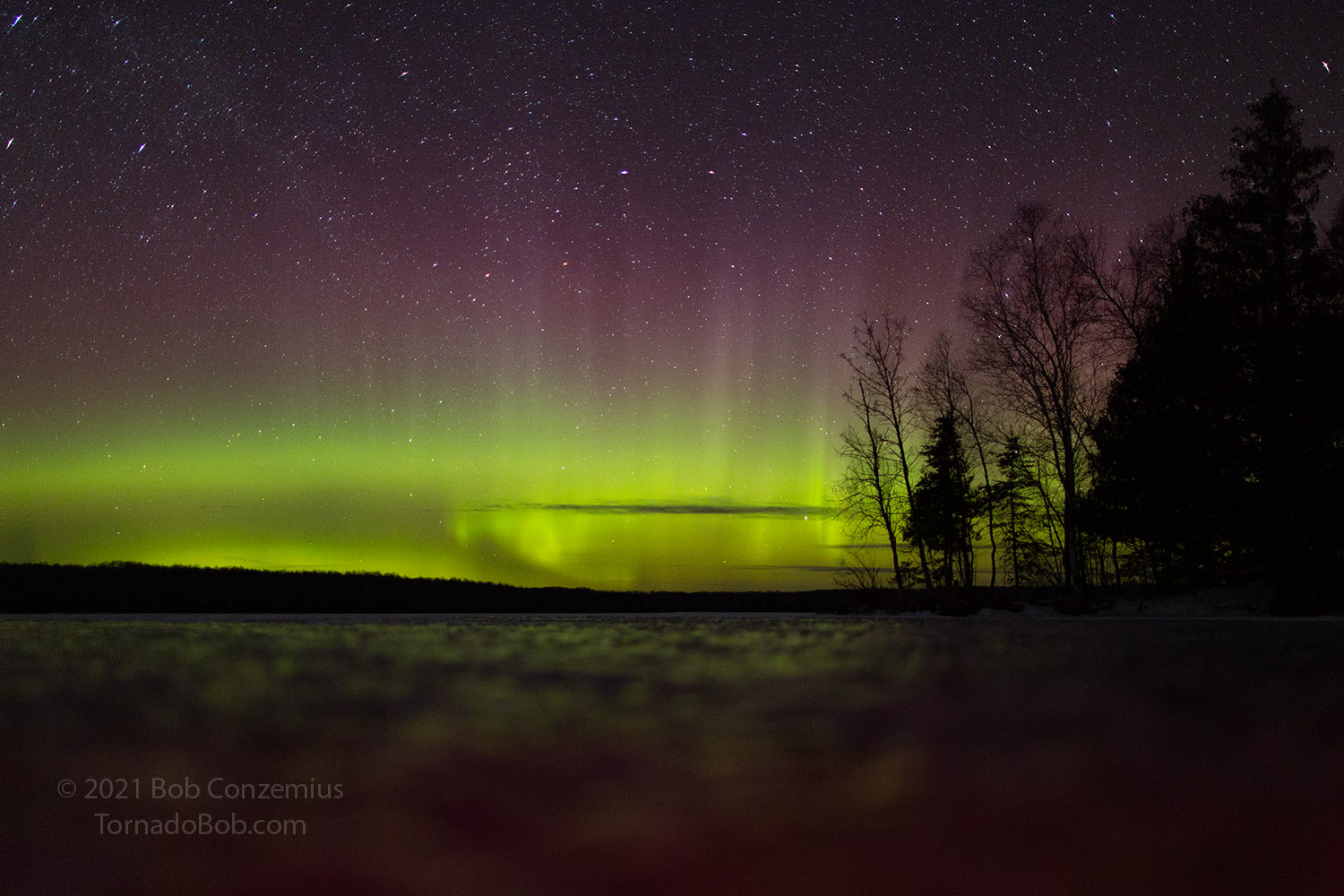 |
| Shot from the ice. A substorm begins. |
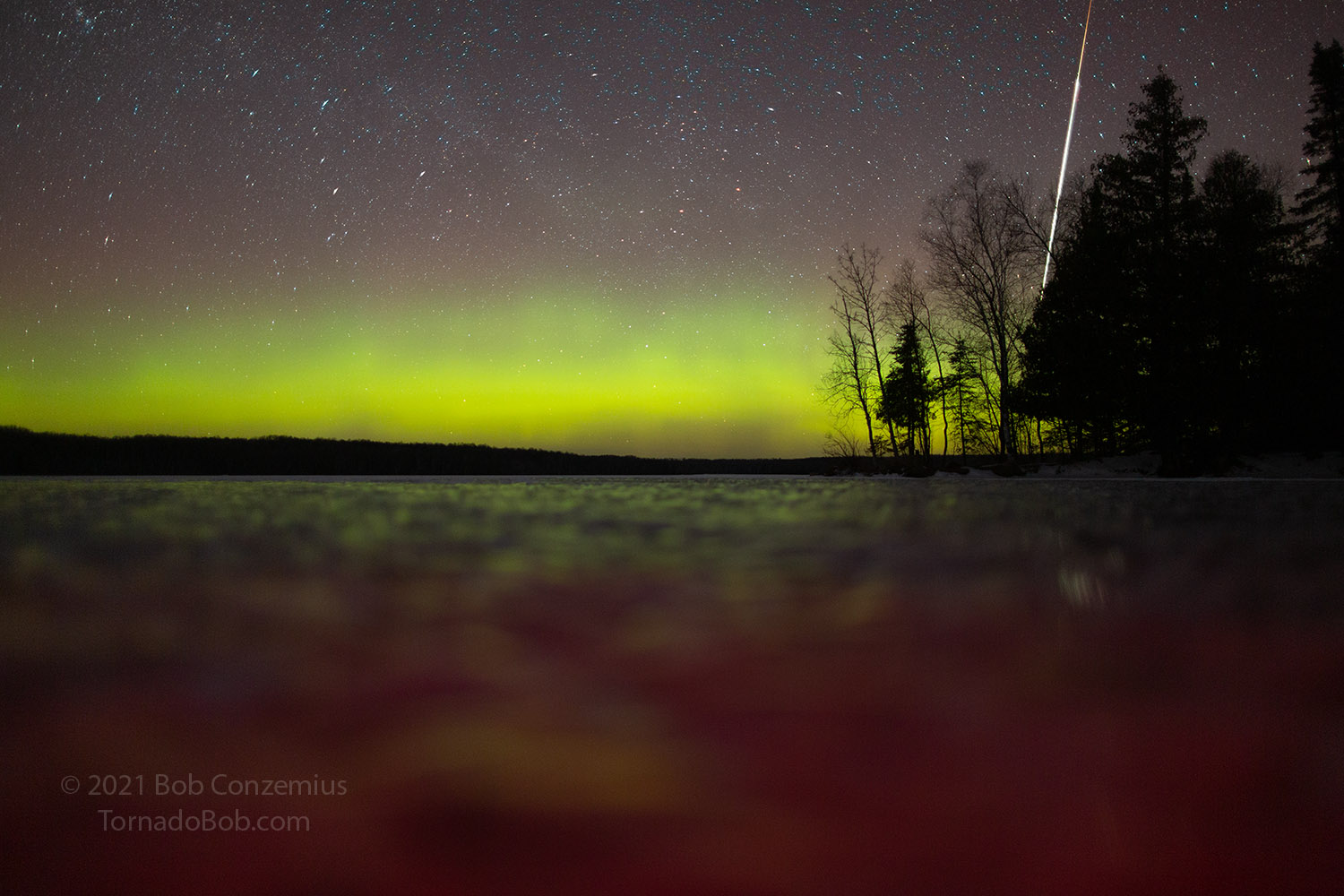 |
| A big meteor falls. |
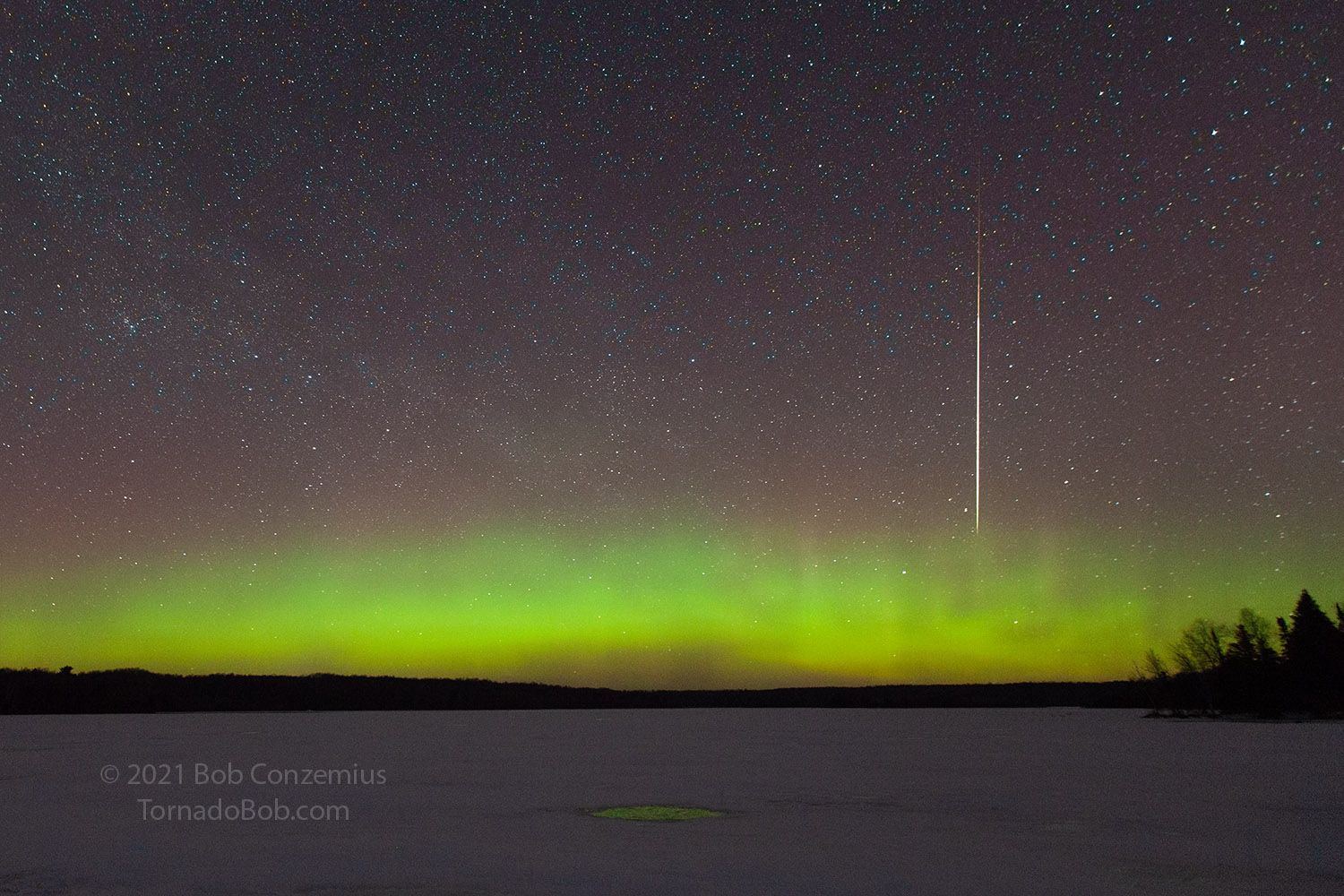 |
| Wider shot (16mm) of the meteor with the other camera. |
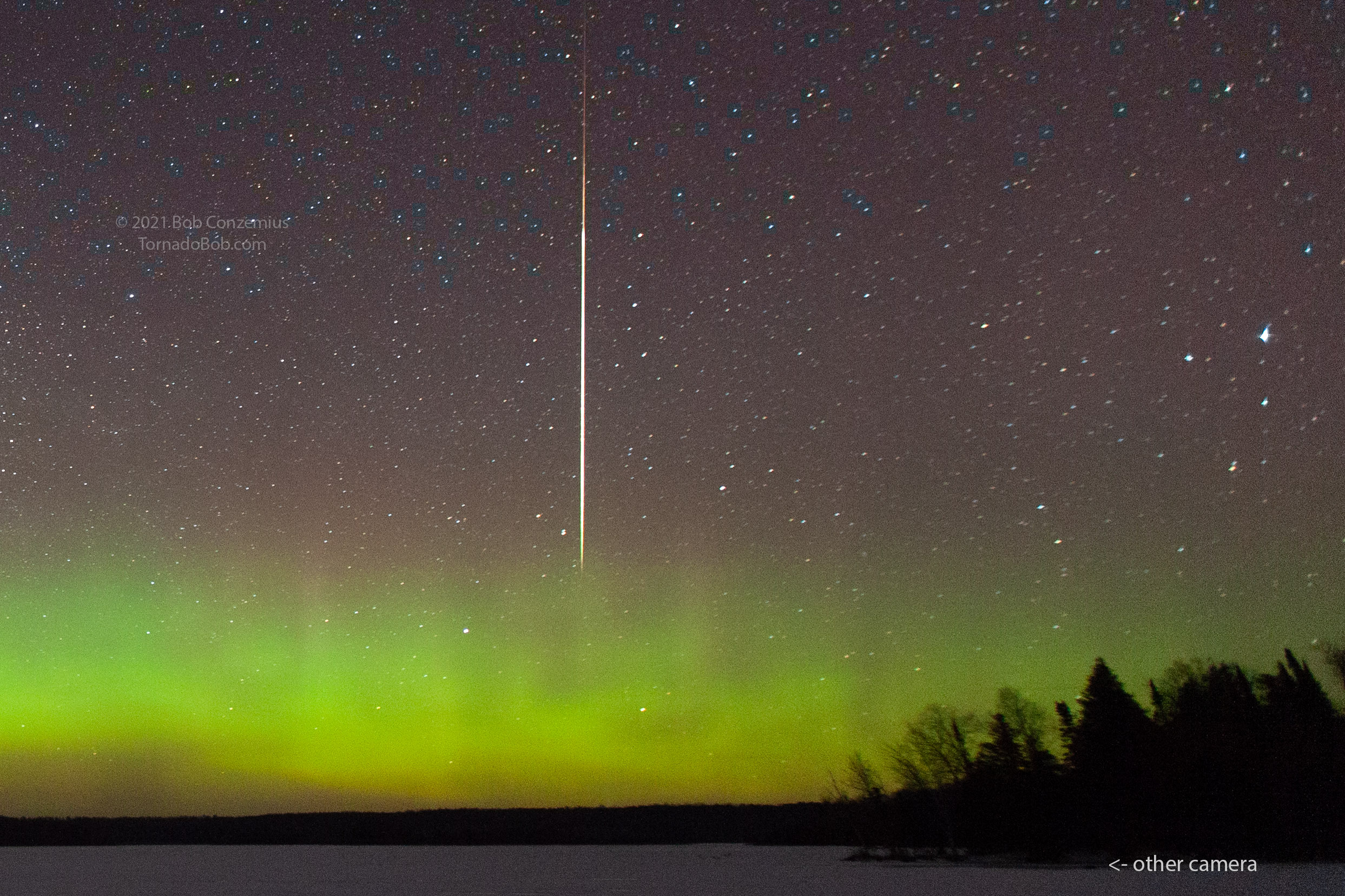 |
| Crop of the wider shot. |
With the help of a shot taken by someone about 100 miles to my east, I was able to triangulate the position of the meteor to within a few kilometers. It was just barely into Canada, even though it seemed to be close enough to be in the U.S. These meteors light up at a pretty high altitude, so they may be farther away than you would think. It illuminated at an altitude of around 40 miles (64 km) and fell to about 21 miles (34 km) before dissipating.
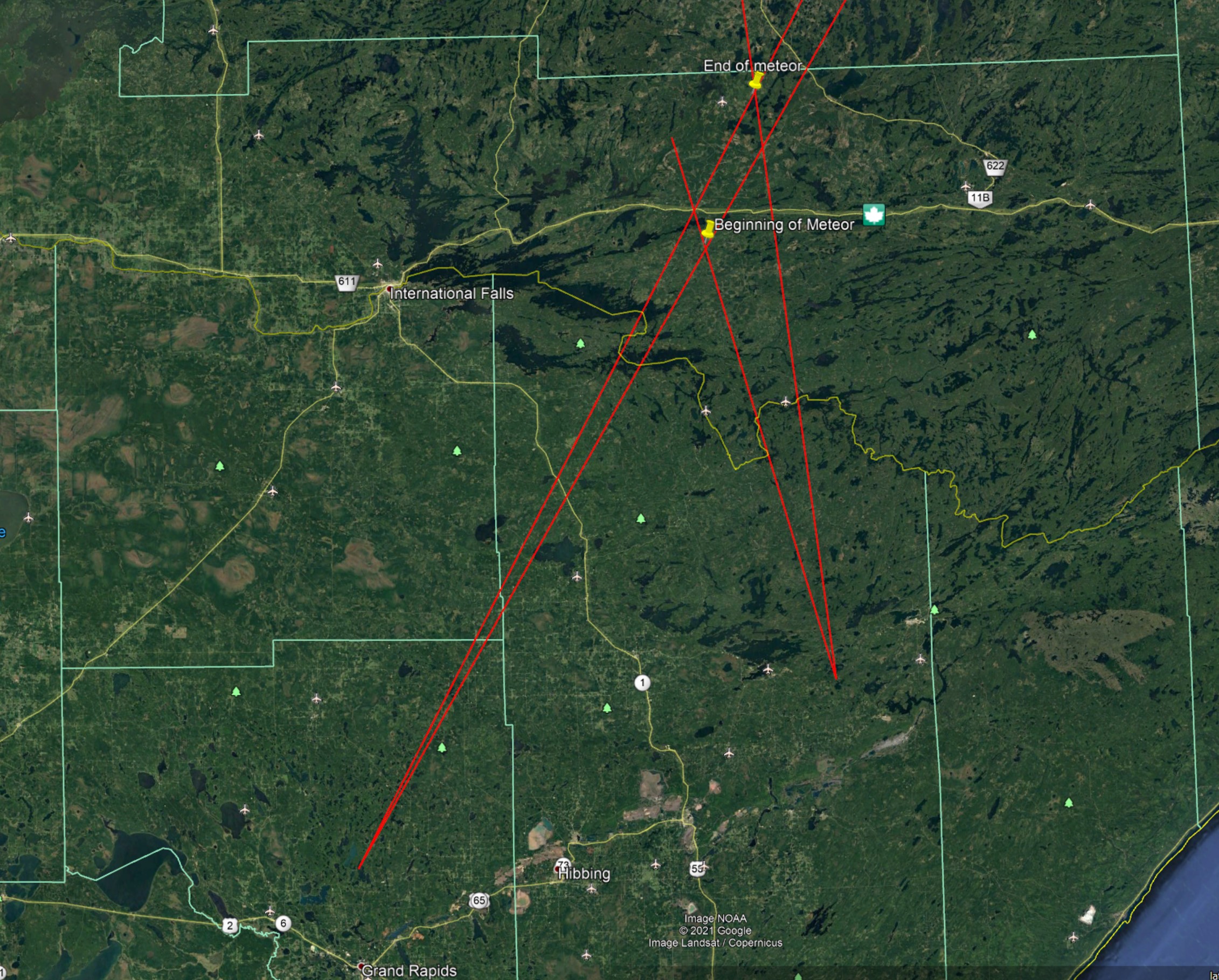 |
| Wider shot (16mm) of the meteor with the other camera. |
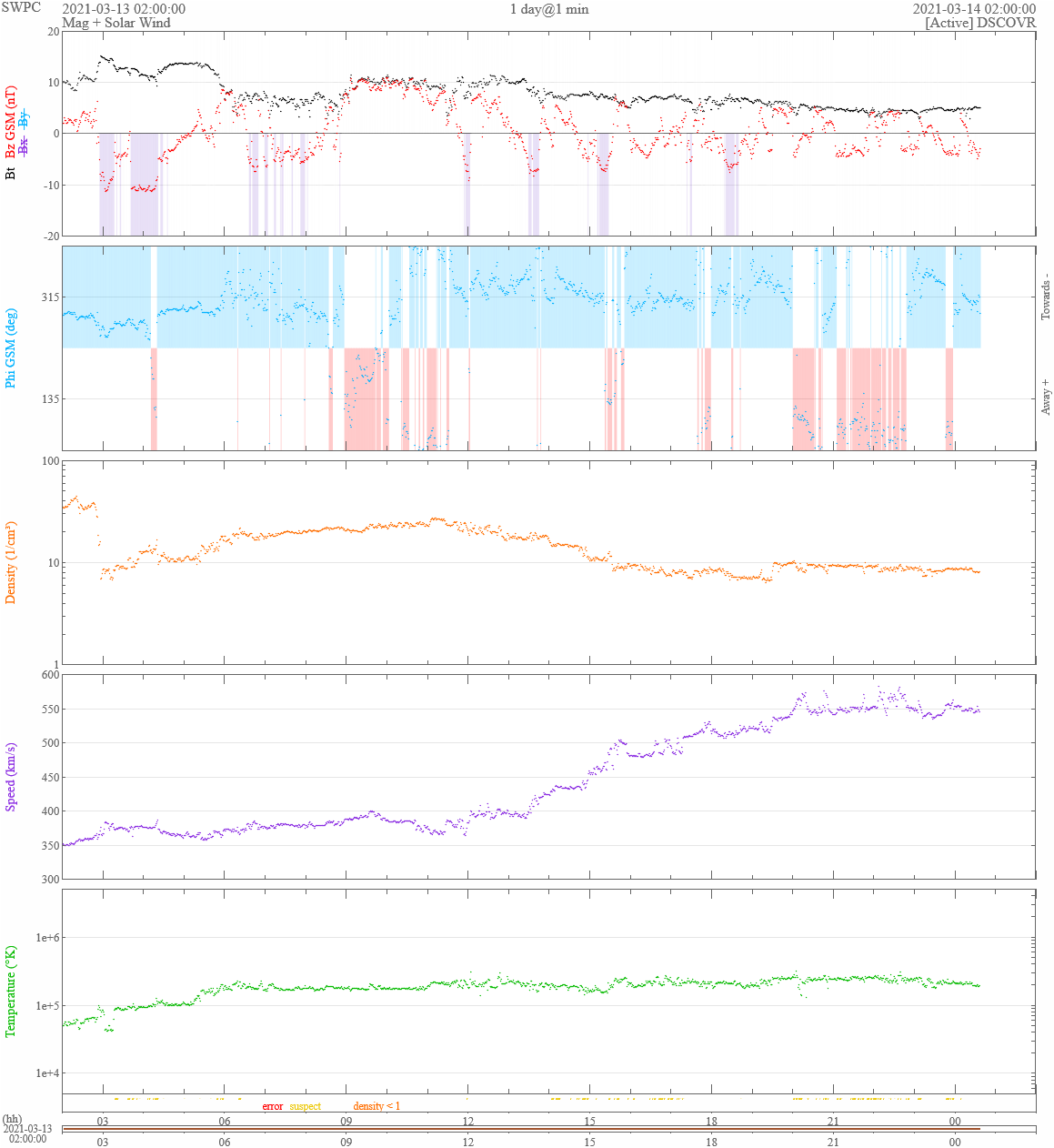 |
| Time series of solar wind parameters. |
Back to Auroras | Home





